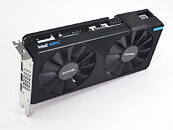
Intel Outs Workaround for High Arc A770 Idle Power: Force PCIe L1 ASPM in Motherboard BIOS
Intel Arc A770 "Alchemist" graphics card has an idle power-draw problem. It pulls 44 W (card-only) power when idling. This used to be acceptable some 15 years ago, but GPU idle power-draw has come a long way since. The reigning Goliath GeForce RTX 4090 pulls just 21 W when idling, and the RTX 3070, the card the A770 was extensively compared against, only pulls 9 W—that's 7 LED downlights worth power-difference between the A770 and RTX 3070. Intel has a workaround to this problem: enable the PCI-Express active state power management (ASPM) setting to L1 mode in your motherboard's UEFI BIOS setup program.
The Intel Xe-HPG "Alchemist" graphics architecture reportedly uses PCIe Gen 2-era L0 and L1 ASPM, which needs to be forced via software settings. To do this, find the PCIe ASPM settings in your BIOS setup, and enable them with the "L1" setting. You then make your way to Power Options in the Windows Control Panel, edit your active power scheme, and manually set the PCI-Express "Link state power-management" to "Maximum." This affects the power-management behavior and performance of all PCIe devices in your system, including NVMe SSDs, not just the graphics card. Intel did not put out its power-draw numbers for this workaround, but we intend to test it as soon as we can.
The Intel Xe-HPG "Alchemist" graphics architecture reportedly uses PCIe Gen 2-era L0 and L1 ASPM, which needs to be forced via software settings. To do this, find the PCIe ASPM settings in your BIOS setup, and enable them with the "L1" setting. You then make your way to Power Options in the Windows Control Panel, edit your active power scheme, and manually set the PCI-Express "Link state power-management" to "Maximum." This affects the power-management behavior and performance of all PCIe devices in your system, including NVMe SSDs, not just the graphics card. Intel did not put out its power-draw numbers for this workaround, but we intend to test it as soon as we can.













































































